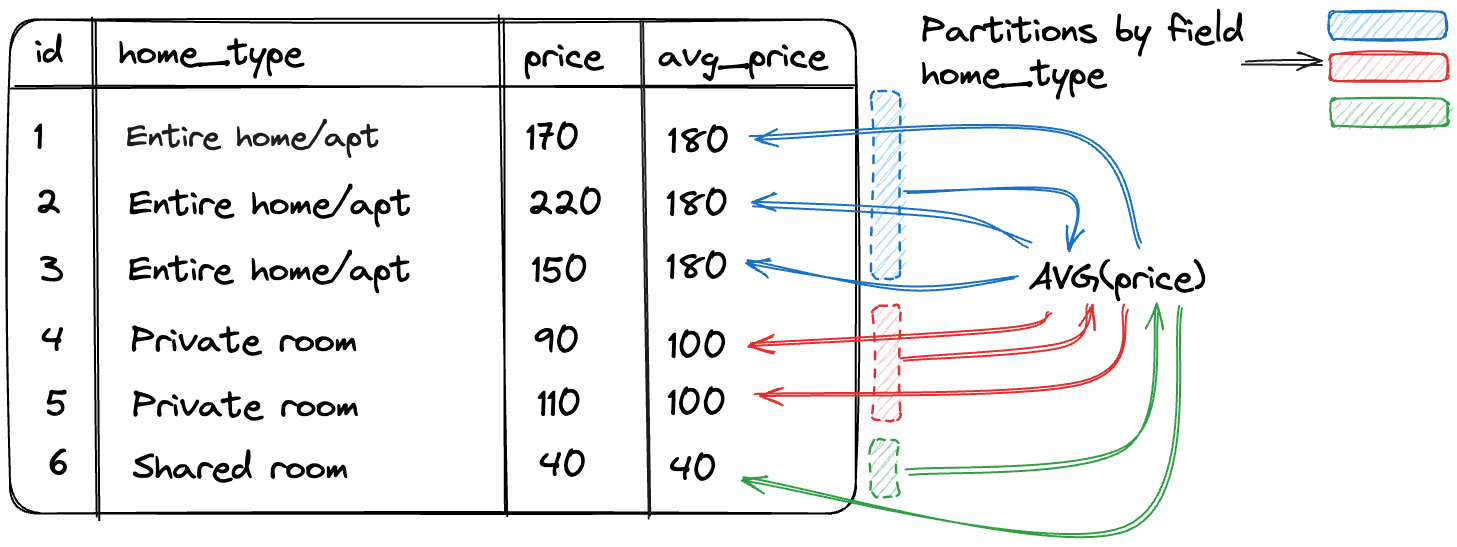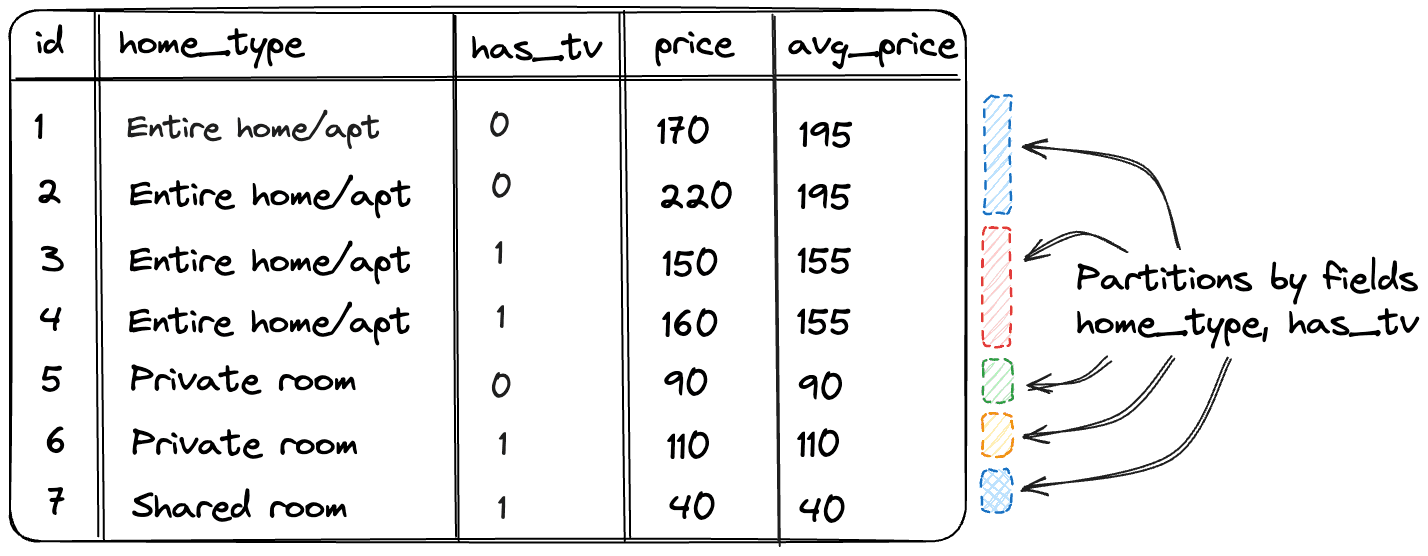Partitions in SQL Window Functions
In the previous article, we briefly mentioned what partitions are and how to use them in window functions. Now it's time to dive deeper into partitions 🤓.
Understanding partitions
Partitions are subsets of rows that are defined for a window function based on one or more columns in a table.
They are used to segment the data, allowing for more detailed analysis and calculations such as aggregation or ranking within each group.
By partitioning, for example, based on the type of housing in a table with housing price data, we can calculate the average price for each type of housing in a separate column.

Applying partitions in SQL
To use a partition with a window function, you need to follow the following syntax:
MySQL 8.1SELECT <window_function>(<table_field>) OVER ( PARTITION BY <partition_columns> )
Example usage
Now let's look at an example of using a partition with a window function using a simple example.
Consider the Rooms table from the Airbnb database, specifically the home_type and price fields:
MySQL 8.1SELECT home_type, price FROM Rooms;
We can see that all rental homes are divided into 3 categories: "Private room," "Entire home/apt," and "Shared room."
Each category of housing has its own price range. To find out the average price within a specific category and compare it to the current price, we can use window functions.
Let's add another column, avg_price, to our result table that calculates the average price per category. It will look like this:
MySQL 8.1SELECT home_type, price, AVG(price) OVER (PARTITION BY home_type) AS avg_price FROM Rooms
What's happening in the added line?
- PARTITION BY home_type divides all records into different partitions based on the unique values in the home_type column.
- Then, for each record, AVG(price) calculates the average price (price) within its partition (home_type).
The result of executing this part of the query will be the avg_price column, which indicates the average price for each record's housing category (home_type).
Partitions on multiple columns
Partitioning can also be done on multiple columns, allowing for more complex and precise segmentation for analysis.
For example, for our Rooms table, we can create partitions based on two columns: the housing category home_type and the presence of a TV in the accommodation has_tv .
Here's an example query with partitioning on two columns:
MySQL 8.1SELECT home_type, has_tv, price, AVG(price) OVER (PARTITION BY home_type, has_tv) AS avg_price FROM Rooms
Here, PARTITION BY home_type, has_tv creates unique partitions for each combination of home_type and has_tv, allowing us to calculate the average price of housing for the current housing category with or without a TV.
